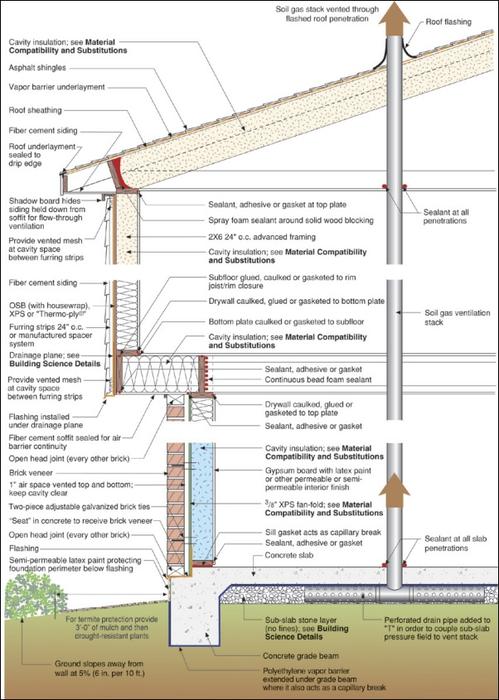Vapor barriers are a must for protecting your home against the damaging effects of moisture and keep your crawl space dry.
How important is vapor barrier in attic.
A vapor barrier is a thin layer of impermeable material typically polyethylene sheeting included in building construction to prevent moisture from damaging the fabric of the building.
The paper facing contains a layer of impermeable asphalt that prevents water vapor from passing through it.
The insulation fiberglass or cellulose is then placed on top of the drywall with no vapor barrier above or below.
After the insulation is in place you will want to add a vapor retarder sometimes called a vapor barrier if you need one.
Some debate still occurs over how necessary vapor barriers are but a consensus is growing closer.
Attic vapor barrier detail for cold climates the best approach for a vented attic in a cold climate is installing a layer of drywall with a good coat of latex paint the paint creates a semi permeable vapor barrier.
In circumstances where conditions inside a home or office are much different than outdoor conditions water.
Most forms of attic insulation benefit from the addition of a vapor barrier to protect them from the harmful effects of moisture which can reduce their effectiveness over time the following are a few simple steps to help you undertake the task properly so your vapor barrier retains heat without damaging the insulation.
In cold climates the primary purpose of attic or roof ventilation is to maintain a cold roof temperature to control ice dams created by melting snow and to vent moisture that moves from the conditioned space to the attic ventilation acts to bypass the vapour barrier created by most roof.
Do not add a vapor barrier on top of the insulation in your attic since the paper facing on the existing insulation is the vapor barrier.
Throughout the balance of this digest the terms attic and roof will and can be used interchangeably.
Resolution of the vapor barrier debate.
A vapor retarder is a material used to prevent water vapor from diffusing into the wall ceiling or floor during the cold winter.
A plastic vapor barrier is best installed in a vented attic within climates with over 8 000 heating degree days.
On the other hand an air barrier a properly detailed air tight drywall ceiling for example in the absence of a vapor barrier can be effective since it stops the flow of vapor laden air.
A vapor barrier in an attic assembly in a severely cold climate with the absence of an air barrier will likely be ineffective.

